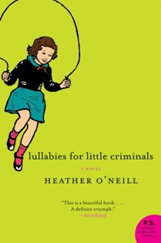1. Where is the book on the narrative continuum? This title is a mix of highly narrative moments with periods of fact-based prose. The author inserts stories of his own experiences and the experiences of others while answering questions posed to him with fact-based answers.
2. What is the subject of the book? The author attempts to guide readers toward peace of mind by emphasizing the importance of the present moment. He guides readers to an understanding of how to remain present despite the daily struggles of living. Borrowing from Eastern meditative practices, he offers readers habits to help them stay focused in the present moment and therefore achieve a peaceful mind.
3. What type of book is it? This book is spiritually-based, self-help/motivational, book
4. Articulate appeal
What is the pacing of the book? The pacing is deliberately slow, leisurely, and purposeful
Describe the characters of the book? The author is one of the few characters in the book. Tolle includes anecdotes of his own spiritual experiences as examples of how to achieve success with the practices he puts forward in the book. The reader might also be considered a character in this piece, as he uses second person often.
How does the story feel? Calming, purposeful, and reflective
What is the intent of the author? In this book, the author attempts to gift readers with a peaceful, unencumbered, mental state by encouraging them to focus on the present moment. The author intends to teach, instruct, and inspire.
What is the focus of the story? In this book, the author carefully lays out his strategies for being aware of the present moment. The book is set-up like an interview and presents the authors' answers to a variety of questions posited to him over the course of him being a spiritual counselor.
Does the language matter? Definitely. The author uses repetitious language to gently instill in the reader the points he is attempting to make. His language is meant to be meditative and thoughtful. There are symbols on every page that encourage readers to stop and think about or reread what they have previously read. The language is also largely accessible to any reader (hence the popularity of the book!).
Is the setting important and well described? There is no traditional setting in this book, save for the spiritual state of peace which the author works to achieve (and successfully so!) throughout the book.
Are there details and, if so, of what? The details in this book are centered around spiritual experiences and mindset. Thoughts, pain, fear, the ego, the concept of time, etc. are all considered.
Are there sufficient charts and other graphic materials? There are none in this book.
Does the book stress moments of learning, understanding, and experience? This book stresses all three, including learning about the root of our unhappiness and strategies to overcome the interference of our thoughts, understanding spirituality and the concept of "true peace", and hopefully utilizing this learning and understanding to experience "The Power of Now" or a peaceful mind.
5. Appeal ranking
1. Learning/experience
2. Tone/Feel
3. Pace














